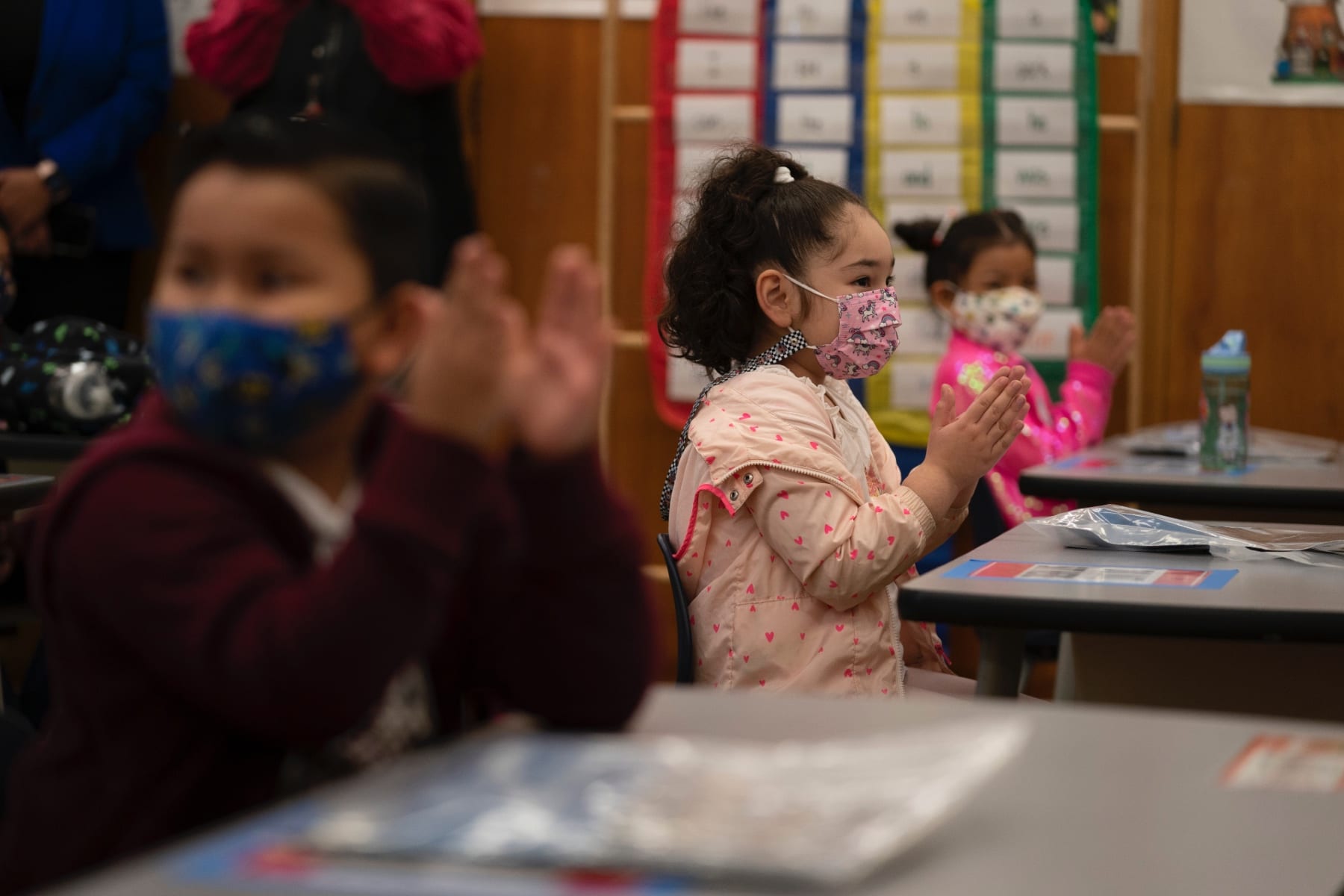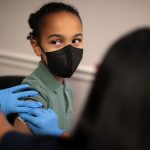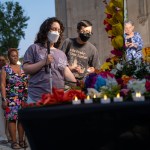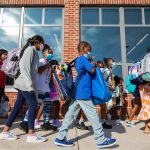The new federal guidance for vaccinated adults is simple: You don’t need to wear a mask indoors or outdoors, and life can get much closer to normal. But for parents whose kids are under 12 — and not yet eligible to get the vaccine — the risk calculus remains far more complicated.
Top health officials, including Anthony Fauci, who runs the National Institute of Allergy and Infectious Diseases, later clarified that the newly unveiled no-masking guideline does not affect children who are too young to qualify for one of the country’s authorized COVID-19 vaccines. It will be up to individual states and localities to figure out how to implement and act upon the new government advice.
But for parents, even if they are vaccinated, fully re-entering society — going to the grocery store unmasked, or going to a movie — is a trickier proposition, especially if they need to bring their children with them. And the burden of decision-making will fall largely to mothers, who are typically their families’ health care deciders.
“The CDC made masking and distancing optional, which for vaccinated people who are generally healthy, that’s not a problem,” said Dr. Leana Wen, an emergency physician and visiting public health professor at George Washington University. “I’m extremely concerned about those who are not yet vaccinated and not by choice: our children under 12.”
So far, about 45 percent of adults older than 18 are vaccinated, per data from the Centers for Disease Control and Prevention (CDC). About 58.7 percent of U.S. adults have gotten at least one dose.
The Biden administration has repeatedly said it will not institute any kind of national “vaccine passport” system, and states including Florida, Texas, Arizona and Utah have pushed to limit the situations in which a business or government agency can require someone to demonstrate proof of vaccination. (Some states have attempted to ban private businesses from requiring such proof, but others have left the decision up to individual business owners.)
Some experts worry that, as a result, more people will go without masks or social distancing in crowded indoor settings — even if they have not been vaccinated.
It can be simpler at home, if parents want to host a group of vaccinated adults. “If you invite people over who are all vaccinated you can treat [masking] the same way” and let the kids in the house go unmasked as you would your immediate household, said Dr. Paul Offit, a pediatric immunology expert at Children’s Hospital of Philadelphia and a government adviser on vaccine policy. “The question is, how do you know if people are vaccinated?”
Small children are less vulnerable to COVID-19 and have far lower risk of complications. But they are by no means immune. State-level data from early May showed that in the United States, children represented about a quarter of new COVID-19 cases.
At least 300 children have died of the virus, Offit noted — though he believes that’s likely an undercount, with a true figure closer to 500. Just under 585,000 Americans have died in total of the virus. And while cases are trending down, some experts said they worry the mask guidance may have come too soon.
“We really will not know whether those who are not wearing masks are vaccinated,” said Dr. Rachel Vreeman, a pediatrics professor and director of the Arnhold Institute for Global Health at the Icahn School of Medicine at Mount Sinai. “I hope the new guidance will be an additional incentive for those privileged with access to vaccines to decide to get vaccinated. At the same time, I do worry about all that we do not know about the new variants of COVID and how much COVID is still around, and the ways that this guidance may place those who cannot get vaccinated at greater risk.”
Some young kids do become seriously ill, and they are also at risk of long-term complications from “long COVID,” she said. They can also pass the virus on to other unvaccinated adults. And in fact, early evidence has suggested they may more easily spread the B.117 strain, which first emerged in the United Kingdom and is now the dominant strain in the U.S.
“COVID is still a serious threat to children’s health,” Vreeman said.
The CDC just this week granted emergency authorization for Pfizer’s two-shot COVID vaccine for kids ages 12 to 15. Currently, vaccine developers are testing the products in younger children. Speaking to CNN, Fauci suggested that those companies could seek authorization for younger kids soon — and that people of all ages could be eligible and vaccinated by the end of the year.
Vreeman and Wen — who both have young children and are themselves vaccinated — said they are not taking off their masks, especially when bringing their kids to indoor settings where they cannot distance and cannot verify that everyone else will be vaccinated. That’s in part to minimize the (small) risk of transmitting the virus to children — the vaccines are very effective but not 100 percent — but also to model good behavior.
“If I’m around unvaccinated people, and I ask my 3 ½-year-old to wear a mask, I’ll wear one too,” Wen said. “He won’t wear one if I don’t wear one.”
And there are other activities that families can and should feel safe doing, Vreeman suggested. A museum or a theater could be safe if the setting is not too crowded — meaning distancing is possible — and the child still wears a mask. But outdoor activities such as parks, picnics and beach trips are the safest, she said.
“The key point is this: We still recommend masks for children when they are indoors with others or in close proximity to others,” Vreeman said.






